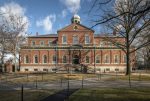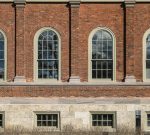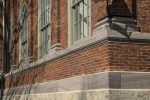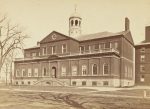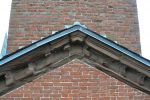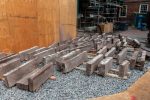It should come as no surprise that Harvard University’s campus in Cambridge, Massachusetts, as it was founded nearly four centuries ago and is the oldest university in the United States, inhabits scores of historic structures that require methodical maintenance and programs of facade restoration. Harvard Hall, constructed in 1766, is one such building and recently underwent an extensive restoration led by Boston-based architecture firm Bruner/Cott & Associates, which included masonry restoration as well as the reconstruction of a wood cupola.
Harvard Hall is a fine example of High Georgian design, and rises from a granite base to a lightly detailed classical arrangement of pilasters, capitals, entablature, and pediment, constituted of reddish-brown brick and brownstone. The lecture hall reaches two-and-half-stories and is topped by overlain pediment and hipped gables and surmounted at their intersection by a slender wood cupola. Typical for a building of such a long lifespan, Harvard Hall was slightly expanded in 1842 and again in 1870.
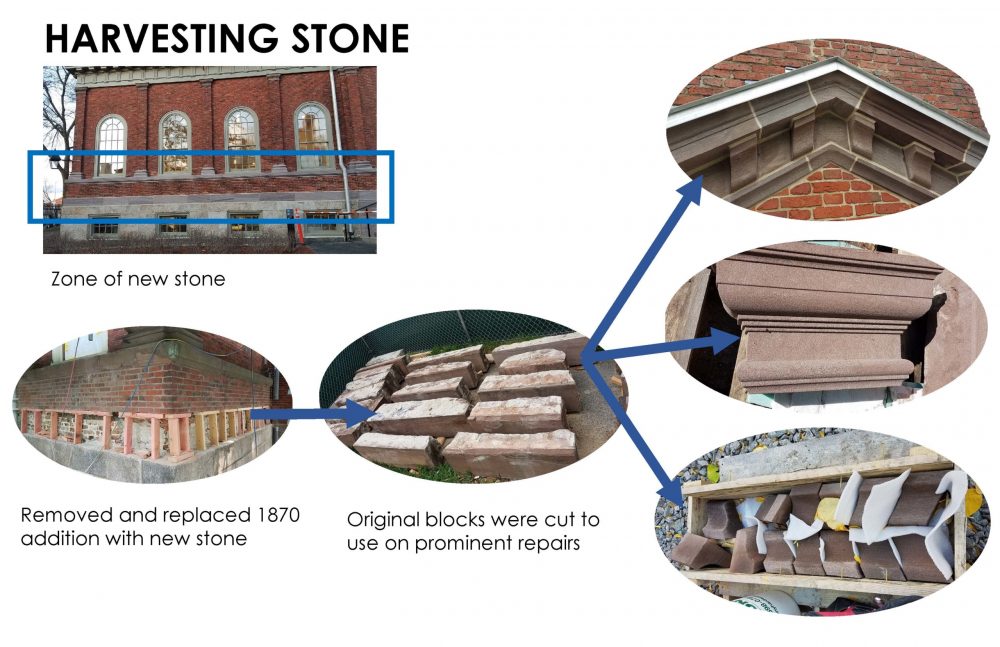
For Bruner/Cott, which has led numerous reuse and preservation interventions across the Harvard campus, the project presented the familiar challenge of blending building investigation and historical research with contemporary material sourcing and construction techniques. Archival resources provided by Harvard University pertaining to the lecture hall were primarily a catalog of black-and-white images that did not provide much of a roadmap in terms of material guidance. The team turned towards building analysis to fill in the empty pieces.
On-site investigation of the building’s masonry was led by Simpson Gumpertz & Heger and Consigli Construction, and relied on hydraulic lift access for individual stone condition analysis and hand-sounding of the brownstone; information that was crucial to the development of recommended treatments and cost estimates. Masonry and brick, by virtue of the geological qualities of their quarries and pits of origin, range in permeability and porosity and testing is required to properly match to contemporary sources.
“Ground level stone removals and coring helped to confirm stone thicknesses and wall construction at different locations around the building and from different eras,” said Bruner/Cott principal Henry Moss and preservation architect Adrienne Cali. “Extensive trials for redressing stone surfaces and in situ comparison of stones from multiple source quarries led to final decisions about when to employ inserts (Dutchmen), when to redress, and when to cut full stones longitudinally to expose a new surface and re-bed in original locations with mortar back-up.”
Reconstruction of the cupola was confined to the middle section, or belfry. The existing cupola was lifted off of Harvard Hall and disassembled; Riggs Construction, based in Milford, Massachusetts, handled the restoration of existing carpentry and the crafting of an entirely new belfry out of laminated Alaskan cedar; the original construction material was oak. Following fabrication, the pieces were craned into position and fastened into place.

A significant aspect of Harvard Hall’s restoration was the repainting of the historic wood trim found across the facade to replace a white color scheme deployed in the middle of the 20th century. Building Conservation Associates (BCA) took the lead in an extensive paint analysis of the cupola, cornice, and window frames; cross-sections of each were analyzed at the granular level through microscopy and revealed just under 40 layers of paint accrued over the centuries. Ultimately, BCA, Bruner/Cott and the Harvard Faculty of Arts and Sciences and Harvard Planning opted for a warm gray paint of the same color applied during the building’s last significant expansion in 1870. “The Faculty of Arts and Sciences worked with the Cambridge Historical Commission and Building Conservation Associates on the selection and integration of the closest match of this color” continued Moss and Cali. “The paint was not stripped during this project to retain its important history for possible future analysis.”
